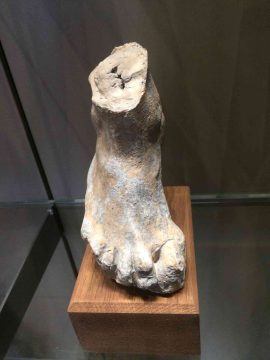Christopher Benfey in the New York Review of Books:

In a glass case at the Musée Rodin, displaying preparatory studies, my attention settled on a terra-cotta fragment identified as “The Thinker’s Right Foot.” His foot! Suddenly, I had a completely different feel for The Thinker. And I found myself wondering whether Rodin, too, had felt that the success of the sculpture might depend in some crucial way on getting the feet right. In one of his two major statements on The Thinker, when he recalled moving from his original concept of Dante in earflaps to something more universal, Rodin wrote: “I conceived another thinker, a naked man; seated upon a rock, his feet drawn under him, his fist against his teeth, he dreams.” The sequence here—the rock, the feet, the fist, the teeth, the dream—implies that thinking, as Rodin conceived of it, emerges from the feet and moves upward and inward. I looked carefully at the Thinker’s right foot, how the big toe slides under the adjacent, sheltering toe to get a better grip.
I half-remembered an essay Georges Bataille wrote on “The Big Toe,” in which he noted that man, “though the most noble of animals… has feet, and these feet independently lead an ignoble life.” Bataille touches here on what one might call the cultural history of feet. Feet are base; they are in touch with dirt, everything that humans, in their vanity, wish to rise above.
More here.
